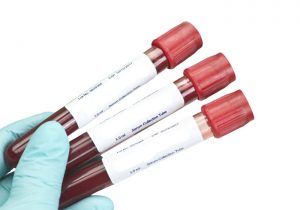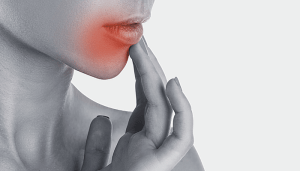How common is herpes?
More than 50 percent of the adult population in the United States has oral herpes (commonly called cold sores or fever blisters). Most people contract oral herpes when they are children by receiving a kiss from a friend or relative.
According to the Centers for Disease Control and Prevention (CDC), about 12% (one in eight) persons ages 14-49 in the United States has genital HSV-2 infection; however, as many as 90 percent are unaware that they have the virus. There are many reasons people do not know they have herpes (see the section on Signs and Symptoms for more).
Anyone who is sexually active can contract genital herpes.
How does someone get herpes?
Herpes is transmitted through direct skin-to-skin contact. This happens when a contagious area comes into contact with a tiny break in the skin or mucous membrane tissue, usually on the mouth or genitals. Most skin on the body is too thick for the virus to go through.
Oral herpes (around the mouth, sometimes called cold sores or fever blisters) can be passed on through kissing or oral sex. If a person with oral herpes performs oral sex, it is possible to pass along the infection to the partner’s genitals. If a person with genital herpes has sex, it is possible for his or her partner to get genital herpes. Any person who is sexually active can get genital herpes.
Genital herpes can be transmitted sexually both when symptoms are present and sometimes when symptoms are not present. There are several days throughout the year (called asymptomatic reactivation, asymptomatic shedding, or subclinical shedding) when the virus may be on the surface of the skin, but there are no symptoms. Herpes can be passed through sexual contact during this time.
There are no documented cases of a person getting genital herpes from an inanimate object such as a toilet seat, bathtub, or towel. Herpes is a very fragile virus and does not live long on surfaces.
What happens when herpes enters the body?
One thing that distinguishes viruses in the herpesvirus family from other types of viruses is something called latency. Herpes simplex and other herpesviruses have a way of creating a small but permanent colony of viral particles inside the body. This colony is often completely inactive (or “asleep”) but it stays for a lifetime.
Here’s how it works: once HSV gains a foothold, the virus begins making copies of itself and spreading. This can lead to a range of signs and symptoms, everything from subtle symptoms that go unrecognized to severe illness. In response, the immune system mobilizes its forces for an assault and limits HSV’s spread.
Whether there are severe symptoms or not, the virus will stay in the body. To avoid the immune system, HSV will retreat along the nerve pathways, hiding in a nerve root called a “ganglion.” In cases of genital herpes, HSV retreats to the sacral ganglion, located at the base of the spine. In oral or facial herpes (cold sores), HSV finds its way to the trigeminal ganglion, at the top of the spine. In the ganglion, the virus remains inactive (“latent”) for an indefinite period of time.
The phenomenon of latency is similar to a sleep cycle. Basically, the virus returns to a safe haven and sleeps, sometimes for long periods. Unfortunately, while HSV is latent, various biological events can cause it to become active and begin traveling the nerve pathways back to the skin. There it can cause signs and symptoms again, though it doesn’t always do this.
How often the virus “wakes up” is a complicated question. It used to be thought that all of the HSV’s “waking times” were marked by outbreaks—-an irregularity in the skin (defined as a “lesion”) such as a pimple, for example, or else some kind of symptom like an itch. Then researchers learned that the virus could wake and become active without causing noticeable signs or symptoms: no itch, no pain, no pimples, no blisters. This phenomenon has been called a number of things, including “asymptomatic shedding,” “asymptomatic reactivation,” and “subclinical shedding.”
Asymptomatic shedding applies to the following situations: 1) some lesions are overlooked because they occur in places we simply never look or can’t see; 2) some are mistaken for something else—an ingrown hair, for example; and 3) some can’t be seen at all with the naked eye. The point is that when herpes “wakes” and travels to the surface of the skin or mucous membranes, it is often subtle and hard to recognize, even for a healthcare provider, and sometimes impossible to spot. Also, even if you’re a person with recurring signs and symptoms that you can usually recognize as herpes, there are almost certainly days when you won’t be aware that the virus has reactivated and traveled to the skin or mucous membranes.
What are the signs and symptoms?
While some people realize that they have genital herpes, many do not. It is estimated that one in eight persons in the United States has genital herpes, but as many as 90 percent are unaware that they have the virus. This is because many people have very mild symptoms that go unrecognized or are mistaken for another condition or no symptoms at all.
Because signs can vary a great deal, we recommend that an individual see a healthcare provider to be tested if they have a lesion of any kind. This can be swabbed for a culture test or for other sensitive tests.
A person may show symptoms within days after contracting genital herpes, or it may take weeks, months, or years. For this reason, it can be difficult for people to know when and from whom they may have contracted the virus.
The “classic” symptoms that most people associate with genital herpes are sores, vesicles, or ulcers – all of which can also be called “lesions.” (The scientific literature on herpes uses the term “lesion” to describe any break or irregularity in the skin.) These classic lesions of genital herpes often resemble small pimples or blisters that eventually crust over and finally scab like a small cut. These lesions may take anywhere from two to four weeks to heal fully. During this time, some people will experience a second crop of lesions, and some will experience flu-like symptoms, including fever and swollen glands, particularly in the lymph nodes near the groin. Headache and painful urination also sometimes accompany full-blown symptoms of first episodes.
But for many other people, herpes lesions can so mild that they may be mistaken for insect bites, a yeast infection, “jock itch,” and other conditions. In other words, the signs go unrecognized as being caused by genital herpes. Also, signs and symptoms can be found: on the penis and vulva; near the anus; on the thigh; on the buttocks—virtually anywhere in the genital area.
But what if you don’t see any lesions nor have other symptoms? In some studies, people with herpes were completely unaware of lesions about one third of the time that the virus was found to be active in the genital area. While recognizing lesions and other symptoms is important, this cannot always tell you when the virus is active.
The amount of outbreaks someone has varies from person to person. The average number of outbreaks for a person with genital HSV-2 is four to five per year. The average for genital HSV-1 is less than one outbreak per year. Usually, there are more outbreaks during the first year, and many people find that outbreaks tend to lessen in severity and frequency with time.
Early in the phase of reactivation many people experience an itching, tingling, or painful feeling in the area where their recurrent lesions will develop. This sort of warning symptom—called a “prodrome”— often precedes lesions by a day or two. To be on the safe side, it’s best to assume virus is active (and, therefore, can be spread through direct skin-to-skin contact) during these times.
Learn more about signs and symptoms, the first episode, and recurrences.
Can I be tested for herpes?
There are different tests available for herpes. Some tests can be done if you are experiencing symptoms. Blood tests are available for people who may not have had symptoms or if the signs have already healed. Not all tests are accurate, however, and many healthcare providers are unclear on which tests to perform. To find out more about getting an accurate diagnosis, visit our section on testing.
How can I reduce my risk for herpes?
Any sexually active person may contract genital herpes. Aside from abstaining from sex or mutual monogamy with one uninfected partner, there are many options a couple may consider to reduce the risk of transmission.
Since one in eight persons is thought to have herpes and the majority of people don’t know, if a partner has ever been sexually active, it is possible that she or he could unknowingly have the virus too. Accurate blood tests are available to determine whether a person has antibodies for HSV. Knowing a partner’s status can help a couple make a joint decision about whether they need to take steps to reduce the risk of transmitting HSV.
If one or both partners have herpes, it is important to become educated about herpes, to understand the basics of herpes prevention, and to make decisions together about which precautions are right for you. If someone has signs or symptoms around the genital or anal region (genital herpes), he or she should not have sexual activity until all signs have healed. When there are no symptoms present, there is still the possibility of asymptomatic reactivation. Using condoms between outbreaks for genital-to-genital contact can reduce the risk of transmission. While condoms don’t always cover the potential sites of viral shedding, they offer useful protection against the virus by protecting or covering the mucous membranes that are the most likely sites of transmission. Furthermore, keep in mind that condoms also help reduce the risk of acquiring another STI.
One antiviral medication for herpes, valacyclovir, has been shown to reduce the risk of herpes transmission. When a person with a history of recurrent genital herpes takes 500 mg of valacyclovir daily, it can reduce the risk of transmission to a partner who does not have the virus by 50%. It’s likely that a combination of suppressive valacyclovir and condoms provides greater protection than either method alone.
We do not recommend regular use of the spermicide nonoxynol-9 (“N-9”) as it can cause irritation in the genital area, making it easier for some STIs to be transmitted. If a spermicide is used, it should be used with a condom, not in place of one.
If you share your sex toys with a partner, you should put a condom on the sex toy, remove it after use on one partner, and thoroughly clean the toy before using it on a different person or location (mouth versus anal or vaginal area).
If someone has a symptom around the mouth (oral herpes), she or he should not perform oral sex until all signs have healed. When there are no symptoms present around the mouth, using a barrier (such as a dental dam) or condom when performing oral sex can reduce the risk of contracting genital herpes. By performing oral sex on someone who has genital herpes, it would be possible to contract oral herpes – but this is rare. Most cases of genital herpes are caused by HSV-2, which rarely affects the mouth or face. Also, and even more importantly, most adults already have oral HSV-1, contracted as a child through kissing relatives or friends.
What treatment options are there?
Currently, there is no treatment to cure herpes; however, there are medications to treat symptoms and control outbreaks.
Three antiviral medications (in pill form) are approved by the Food and Drug Administration (FDA) for the treatment of herpes: acyclovir, famciclovir, and valacyclovir. All of these medications, which are taken orally, work by attacking the herpes virus and disrupting its ability to multiply. Each of these medications can be used during a recurrence (outbreak) to help speed the healing process of an outbreak.
All three drugs are FDA-approved for daily, suppressive therapy to help reduce the frequency of outbreaks. Acyclovir is also available in the form of an ointment, but the medication has been proven to be much more effective for genital herpes when taken orally as a pill. Valacyclovir, when taken daily (suppressive therapy) by a person with recurrent genital herpes, can reduce the risk of transmission to a partner.
Using medication to treat genital herpes is not required. However, if a person would like to use antivirals, speaking with a healthcare provider can help determine which treatment may be right for them.
For more information on treatment and alternative therapies, see the treatment page.
What if I am pregnant?
While neonatal herpes is a serious condition, it is also very rare. Less than 0.1% of babies born in the United States each year get neonatal herpes. By contrast, some 20-25% of pregnant women have genital herpes. This means that most women with genital herpes give birth to healthy babies.
A mother helps the baby by passing her antibodies to the infant during pregnancy, so women who acquire genital herpes before becoming pregnant have a low risk of passing the virus to their baby.
A woman who contracts genital herpes during the third trimester of pregnancy is at a higher risk of passing herpes to the baby because she has not had time to build up antibodies to the virus.
Most mothers with genital herpes have normal vaginal deliveries. Learn more about herpes and pregnancy.







